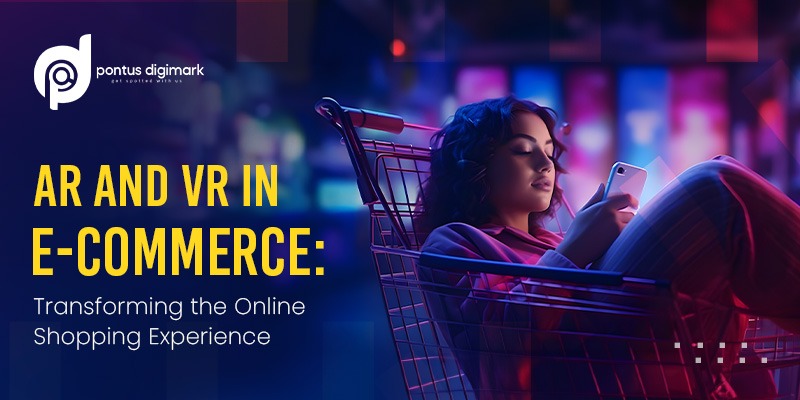Augmented Reality (AR) and Virtual Reality (VR) technologies has emerged as a game-changer, revolutionizing the online shopping experience. As consumers increasingly seek immersive and personalized interactions, businesses are leveraging AR and VR to provide innovative solutions that bridge the gap between the digital and physical realms. Partnering with top AR agencies and digital marketing experts, e-commerce platforms are reshaping their strategies to create captivating experiences, enhance customer engagement, and drive conversions. From virtual try-on features to interactive product showcases, AR and VR are reshaping the future of online retail, offering unparalleled opportunities for brands to stand out in a competitive market.
Augmented Reality (AR) and Virtual Reality (VR)
AR and VR technologies are integrated into their e-commerce stores to offer customers the ability to preview products, experience services, and make more informed purchasing decisions. AR allows customers to preview products in their own environment, reducing the likelihood of receiving products that do not meet their expectations. On the other hand, VR creates immersive virtual worlds that customers can explore, leading to increased engagement and informed purchasing decisions.
The convergence of AR and VR is expected to bridge the gap between physical and digital retail, providing seamless and comprehensive shopping experiences. These technologies are revolutionizing the world of e-commerce by creating personalized, engaging, and memorable shopping experiences, ultimately driving success in the dynamic world of online shopping
How Do AR And VR Improve The Online Shopping Experience?
AR and VR improve the online shopping experience in several ways, including:
- Enhancing Customer Satisfaction
- Increasing Brand Loyalty
- Driving Informed Purchasing Decisions.
Augmented Reality (AR) allows customers to have a virtual preview of products in their real surroundings, compensating for the touch-and-feel experience of offline shopping and boosting buyer confidence in making purchasing decisions
Virtual Reality (VR) creates immersive virtual worlds that customers can explore, leading to increased engagement and personalized shopping experiences. These technologies have the potential to revolutionize industries such as travel, real estate, and automotive, and are expected to bridge the gap between physical and digital retail, empowering customers to make more informed decisions and fostering deeper connections with brands. Overall, AR and VR technologies are reshaping the future of online shopping by providing interactive, personalized, and memorable experiences for customers.
Contact Pontus Digimark for the best digital marketing services to enhance your brand visibility.
How Do AR And VR Compare To Traditional Marketing Methods In Terms Of Effectiveness?
AR and VR offer several advantages over traditional marketing methods in terms of effectiveness. These technologies create deeper connections with the audience, and enhance customer engagement by providing immersive and interactive experiences, ultimately driving more sales.
They also improve brand awareness by differentiating brands from competitors and providing unique and memorable experiences for customers. Additionally, AR and VR can be cost-effective, as they allow marketers to create virtual environments and experiences that can be shared online, reaching a global audience without the need for physical infrastructure or travel costs.
Furthermore, these technologies enable the creation of personalized and dynamic experiences, allowing marketers to show consumers how life will be when using certain products or services, ultimately driving informed purchasing decisions.
The integration of AR and VR technologies in e-commerce signifies a transformative shift in the way consumers perceive and engage with online shopping platforms. As businesses continue to adapt to evolving consumer preferences, leveraging the expertise of top AR agencies, social media marketing services, and digital marketing agencies becomes paramount. As technology continues to advance, the possibilities for AR and VR in e-commerce are limitless, promising an exciting future where immersive experiences redefine the boundaries of online retail.







